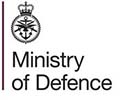Employing a member of the Reserve Forces
Types of Reservists
There are several categories of Reservist, each subject to different mobilisation rules, depending on their experience and skills.
Reserve Forces
The Army, Navy and Royal Air Force (RAF) each have their own Reserve Force:
- the Army Reserve is the Reserve Force for the Army
- the Royal Naval Reserve and the Royal Marines Reserve (known as the Maritime Reserves)
- Reserve Air Forces, including the RAF Reserves and Royal Auxiliary Air Force, is the Reserve Force for the RAF
The Army Reserve is the largest Reserve Force and the one that you are most likely to encounter as an employer.
Reservists are grouped according both to their duties and their level of readiness for mobilisation:
- Volunteer Reservists have an ongoing training commitment and can be mobilised - see Reservists: mobilisation and initial call-out procedure
- Regular Reserves (former members of Armed Forces)
- those on Full-Time Reserve Service (serving full-time for the fixed sabbatical period)
- Additional Duties Commitment (part-time service with Armed Forces)
- High Readiness Reservists (have specialist skills and are subject to short-notice mobilisation)
- Sponsored Reserves (defence contractors with the agreed proportion of Reservists)
Volunteer Reservists
The Ministry of Defence chooses individual Volunteer Reservists for duty using an 'intelligent selection' process. This allows Reservists to be selected according to their individual skills and allows a unit to take into account a Reservist's personal and employment circumstances.
Defence Relationship Management (DRM) supports members of the Reserve Forces and their employers.
- Defence Employer Supportni-reed@rfca.mod.uk
